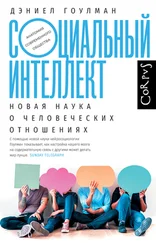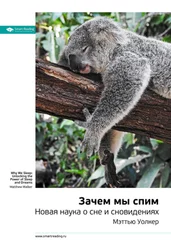Baraniuk C. Why “bowl food” might be tricking your brain // BBC News Online. 28.02. 2016 (https://www.bbc.com/future/story/20160226-why-bowl-food-might-be-tricking-your-brain); Deacon M. The amazing new food trend that’s left Nigella bowled over // Daily Telegraph. 9.01.2016 (https://www.telegraph.co.uk/foodanddrink/12090015/The-amazing-new-food-trend-thats-left-Nigella-bowled-over.html).
Я не уверен, что миска, наполненная печеными бобами, в данном случае не совсем тенденция. К счастью, вы не сидите напротив американского ресторанного критика Джеффри Штейнгартена. Он один раз описал людей, жующих латук из миски, следующими уничижительными словами: «Головы склонены, морды приблизились к пластиковым мискам с рисунком, имитирующим текстуру древесины, и все одновременно хрустят и гребут вилками» (The Man Who Ate Everything: And Other Gastronomic Feats, Disputes, and Pleasurable Pursuits. L.: Headline, 1998. Р. 177.
Кажется, что потребитель не может воспринимать продукт отдельно от тарелки или упаковки, в которой его презентуют; Piqueras-Fiszman B., Spence C. The weight of the container influences expected satiety, perceived density, and subsequent expected fullness // Appetite. 2012. № 58. Р. 559–562. Интригующее наблюдение: люди предпочитают менее соленый суп, который попробовали из мерного стакана, образцу, съеденному с помощью ложки; см. Jeon S. – Y., Lee E. – K., Kim K. – O. The perceived saltiness of soup affected by tasting protocols // Food Quality and Preference. 2014. № 35. Р. 98–103.
Kampfer K. et al. Touch-taste-transference: Assessing the effect of the weight of product packaging on flavor perception and taste evaluation // PLoS ONE. 2016.
Biggs L., Juravle G., Spence C. Haptic exploration of plateware alters the perceived texture and taste of food // Food Quality & Preference. 2016. № 50. Р.129–134. См. также: Piqueras-Fiszman B., Spence C. The influence of the feel of product packaging on the perception of the oralsomatosensory texture of food // Food Quality & Preference. 2012. № 26. Р. 67–73; Tu Y., Yang Z., Ma C. Touching tastes: The haptic perception transfer of liquid food packaging materials // Food Quality and Preference. 2015. № 39. Р. 124–130; см. также: Slocombe B. G., Carmichael D. A., Simner J. Cross-modal tactile-taste interactions in food evaluations // Neuropsychologia. 2016. № 88. Р. 58–64.
Williams L. E., Bargh J. A. Experiencing physical warmth promotes interpersonal warmth // Science. 2008. № 322. Р. 606–607. (Я однажды попытался убедить дизайнеров сделать для меня миски, которые не будут стоять без посторонней помощи, то есть такие миски, которые расплещут свое содержимое, если их не держать осторожно в руках). См. также: McClain A. et al. Visual illusions and plate design. The effects of plate rim widths and rim coloring on perceived food portion size // International Journal of Obesity and Related Metabolic Disorders. 2014. № 38. Р. 657–662. Все это становится еще более важным, когда мы осознаем факт, что подобные визуальные эффекты способны изменить наше пищевое поведение; см.: Wansink B., Painter J. North J. Bottomless bowls: Why visual cues of portion size may influence intake // Obesity Research. 2005. № 13. Р. 93–100. Более того, всем тем, для кого подача еды на сланцевой доске кажется вчерашним днем, а подача еды на кирпиче или в цветочном горшке – чем-то из ряда вон выходящим, миска или пиала могут стать хорошим вариантом. Инновационно, но не слишком «вольно»; см.: Spence C., Piqueras-Fiszman B. The Perfect Meal: The Multisensory Science of Food and Dining. Oxford: Wiley-Blackwell, 2014. Ch. 4.
Spence C., Gallace A. Multisensory design: Reaching out to touch the consumer // Psychology & Marketing. 2011. № 28. Р. 267–308; Gallace A., Spence C. In Touch with the Future: The Sense of Touch from Cognitive Neuroscience to Virtual Reality. Oxford: Oxford University Press, 2014.
Hara K. Haptic: Awakening the Senses, exhibition catalogue. Japan: Takeo Co., 2004; Lewis F., Street R. Touch Graphics: The Power of Tactile Design. Gloucester, MA: Rockport Publishers, 2003. Использование специфического тактильного элемента может также увеличить вероятность того, что потребитель возьмет продукт с полки, а значит, и того, что он его купит; см.: Touch looms large as a sense that drives sales // Brand Packaging. 1999. № 3(3). Р. 39–41.
Как высказался еще один ресторатор: «Потребители ищут впечатления, совершенно отличного от привычного домашнего, и атмосфера, вероятно, привлечет их больше, чем сама еда» (More restaurants sell an exotic atmosphere as vigorously as food // Wall Street Journal, 4 August 1965, p. 1; как сказано в работе Kotler P. Atmospherics as a marketing tool // Journal of Retailing. 1974. № 49. Р. 48–64).
На удивление небольшое исследование, посвященное атмосфере ресторана; Meiselman H. L. et al. Demonstrations of the influence of the eating environment on food acceptance // Appetite. 2000. № 35. Р. 231–237. См. также: Lambert C. U., Watson K. M. Restaurant design: Researching the effects on customers // Cornell Hotel and Restaurant Administration Quarterly. 1984. № 24(4). Р. 68–76.
Kotler P. Atmospherics as a marketing tool // Journal of Retailing. 1974. № 49. Р. 48–64.
North A. C., Hargreaves D. J., McKendrick J. In-store music affects product choice // Nature. 1997. № 390. Р. 132. См. также: North A. C., Hargreaves D. J., McKendrick J. The influence of in-store music on wine selections // Journal of Applied Psychology. 1999. № 84. Р. 271–276.
Nisbett R. E., Wilson T. D. Telling more than we can know: Verbal reports on mental processes // Psychological Review. 1977. № 84. Р. 231–259.
Bell R. et al. Effects of adding an Italian theme to a restaurant on the perceived ethnicity, acceptability, and selection of foods // Appetite. 1994. № 22. Р. 11–24. Достижение этнического ощущения от ресторана – это крупный бизнес для итальянских ресторанов, которые вот уже много лет находятся среди самых популярных этнических заведений в Северной Америке; см.: Ray K. Ethnic succession and the new American restaurant cuisine // The Restaurants Book: Ethnographies of Where We Eat / Ed. D. Beriss, D. Sutton. Oxford: Berg, 2007. Р. 97–114.
Читать дальше
![Чарльз Спенс Гастрофизика. Новая наука о питании [litres] обложка книги](/books/388013/charlz-spens-gastrofizika-novaya-nauka-o-pitanii-cover.webp)





![Колин Кэмпбелл - Китайское исследование - обновленное и расширенное издание. Классическая книга о здоровом питании [litres]](/books/388520/kolin-kempbell-kitajskoe-issledovanie-obnovlennoe-thumb.webp)
![Дэвид Райх - Кто мы и как сюда попали [Древняя ДНК и новая наука о человеческом прошлом]](/books/396012/devid-rajh-kto-my-i-kak-syuda-popali-drevnyaya-dnk-i-thumb.webp)




